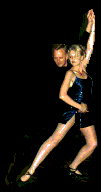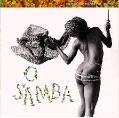|
|
|
Dance Survial Guides...
Background to Samba by Paul F. Clifford Brazil is the fifth largest country in the world and is the birth place of the Samba. Much of the music in the heavily populated coastal areas shows a remarkable combination of African, Native Indian, and Iberian influences. Modern Samba was developed from an earlier Brazilian musical style called Choro. Both Samba the dance and music can take many forms, from the vivacious call response of samba de enredo, the music of Carnaval to samba-cancon or song samba, a more relaxed guitar and rhythm variant. Bossa Nova, which translates to New Wave, hit America big time in the Sixties with "The Girl From Ipanema". This song by the legendary composer Antonio Carlos Jobim became a classic in jazz and elevator music. In the 16th century, the portuguese discovered on the east coast of South America, a place they called the January River (Rio de Janeiro). Colonists soon settled and as the colony prospered, slaves were brought from south-west Africa to work in the plantations of Bahia, in the north-east of what became Brazil. To adherents of the Afro-Brazilian religion, Candomble, Samba means to pray, to invoke your personal orixa (god/saint). The African rhythms enveloped in Latino music came from the Yoruba, Congo and other West African people, who were transported to the New World as slaves. In their homeland the rthythms were used to call forth various gods. Candomble preserves these rhythms to this day! It is these rhythms that has heavily influenced Brazilian music making Samba a unique genre of music.
A composite dance was developed in the 1830's which combined the plait figures from these Negro dances and the body rolls and sways of the indigenous Lundu. Later, carnival steps were included. This dance was modified and began to be performed with the dancers holding each other in the European way (closed dance position). Around 1885, it was adopted by high society in Rio, and popularised as the Zemba Queca. It was modified again and called the Mesemba. At the beginning of the 20th century, the Mesemba was combined with another Brazilian dance, the Maxixe and was popularised in the U.S.A and Europe. It has been described as having the steps of the Polka done to the music of the Cuban Habanera (from Havanna). The present day Samba still contains a step called the Maxixe, consisting of a chasse and point. In the 1930s, a form of the Samba called the Carioca was revived in U.K and spread to the USA. Movies helped popularise it, with Fred Astaire and Ginger Rogers performing it in their first film together. In 1941, its popularity was boosted by performances by Carmen Miranda in her many films. However, the exorbinate fees paid to holders of US copyrights probably had a lot more to do with the rise in popularity of Latin music in the US and the world! To avoid the fees, US radio stations played Brazilian and other Latin music. To the chagrin of the US music industry, the audience loved it! The Ballroom Samba, while maintaining elements of what the Brazilians consider the true Samba, was formalised in 1956 by Pierre Lavelle. Since then, various forms of Samba have been developed to fit the mood of modern music. Other articles in the Origins of Samba
Source: |
|
Press Ctrl-D to Bookmark this page!
Something new will appear at StreetDance most months. Stay up-to-date! Sign up for our free newsletter! Email us! If you enjoyed StreetDance's articles. Tell your friends about this site! Email them! If you found something lacking, tell us and it will be fixed! Tell us what you would like to read about! So talk to us! Feedback. StreetDance@mail.com |
Got a question? Click here! Want to know something more about Latin StreetDance click on one of the followng Dance History Mambo, Cha Cha & Salsa | Merengue | Samba Latin Dance Technique Feeling | Technique | Tricks & Tips | The Yambus | The Clave Basic Timing and Steps Mambo | Cha Cha | Salsa | Merengue | Samba Basic Choreography Mambo, Cha Cha & Salsa | Merengue | Samba Other Stuff Articles | Gig Guides | Dance Videos | Classifieds | Links | Home |
This page was last updated November 2000
copyright Paul F Clifford (2000)

